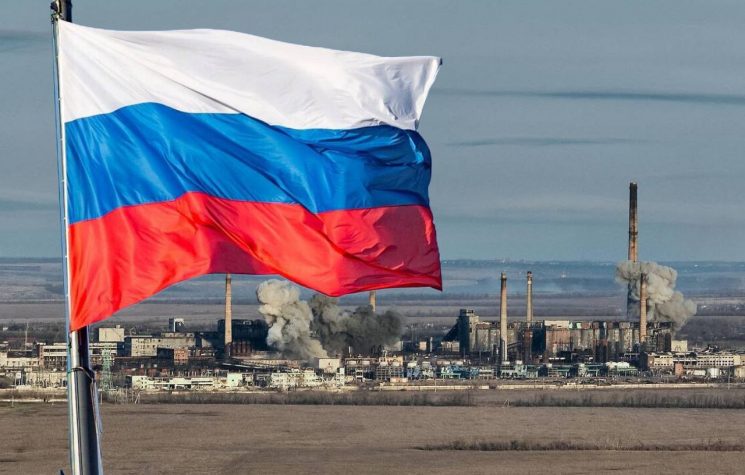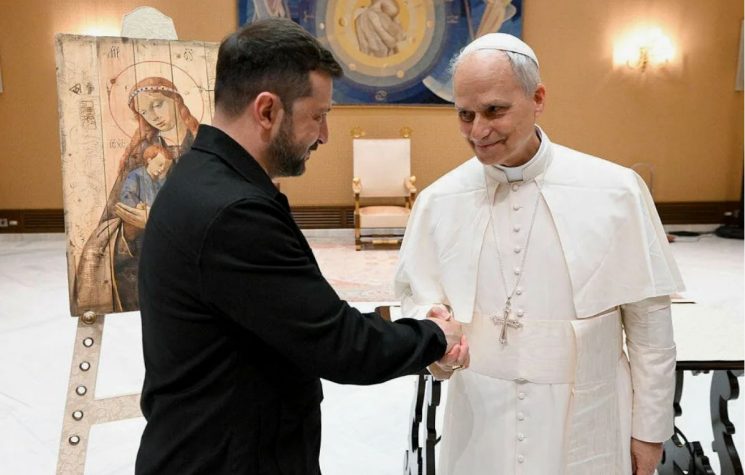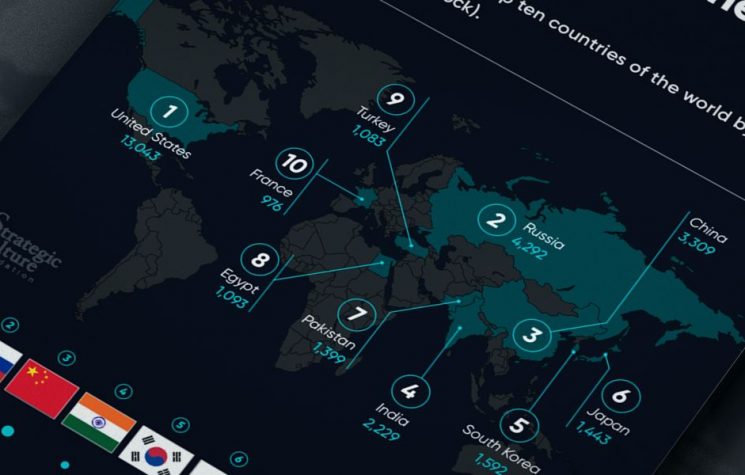The Global Majority should be on full alert. The Greater Idiblistan attack is part of a complex interconnected operation.
Contact us: info@strategic-culture.su
The timeline tells the story.
November 18: Ronen Bar, Israel’s Shin Bet chief, meets with heads of MIT, Turkey’s intel.
November 25: NATO Chief Mark Rutte meets with Turkey’s Sultan Erdogan.
November 26: Salafi-jihadis assembled by Hayat Tahrir al-Sham (HTS), formerly Nusa Front, supported by Turkish intel, plus a hefty Rent-a-Jihadi coalition, launch a lightning-fast attack against Aleppo.
The Rent-a-Jihadi offensive originated in Greater Idlibistan. That’s where tens of thousands of jihadis were holed up, according to the – now proven failed – 2020 Damascus-Moscow strategy, which Turkey had to grudgingly accept. The Rent-a-Jihadi mob comprises scores of mercenaries who crossed over from – where else – Turkey: Uighurs, Uzbeks, Tajiks, Ukrainians, even ISIS-K imports.
Iranian Foreign Ministry spokesman Esmail Baghaei, earlier their week, confirmed the Salafi-jihadi offensive was coordinated by US/Israel.
Baghaei did not mention Turkey, even as he stressed the terror attack happened immediately after Israel accepted a ceasefire with Hezbollah – already broken by Tel Aviv dozens of times – and after Netanyahu publicly accused Syrian President Bashar al-Assad of “playing with fire” by allowing the transit of modern Iranian missiles and military equipment via Syria to Hezbollah.
Right before the ceasefire, Tel Aviv smashed virtually all communication routes between Syria and Lebanon. Netanyahu subsequently stressed that the focus now is on “the Iranian threat”, essential to smash the Axis of Resistance.
According to a Syrian special services source, talking to RIA Novosti, Ukrainian advisers played the key role in the capture of Aleppo – providing drones and American satellite navigation and electronic warfare systems, and teaching Syrian collaborators and Islamic Party of Turkestan operatives how to use them.
Syrian Arab Army (SAA) communications were completely jammed by these electronic warfare systems: “The assault groups and drones were equipped with encrypted GPS devices and extensive use of AI, so that the use and navigation of attack UAVs and kamikaze drones took place from a long distance.”
The mechanism was set in place months ago. Kiev made a straightforward deal with Salafi-jihadis: drones in exchange for batches of takfiris to be weaponized against Russia in the US/NATO proxy war in Ukraine.
What is Turkey really up to?
The practical role of Turkey in the Salafi-jihadi Greater Idlibistan offensive is as murky as it gets.
Over the past weekend, Foreign Minister Hakan Fidan, significantly also a former intel chief, denied any Turkish role. No one – apart from the NATO sphere – believes it. No Salafi-jihadi in northwest Syria can as much as strike a match without a Turkish intel green light – as the Ankara system funds and weaponizes them.
The official Turkey line is to support the Syrian – Salafi-jihadi – “opposition” as a whole while slightly deploring the Greater Idlibistan offensive. Once again, classic hedging. Yet the logical conclusion is that Ankara may have just buried the Astana process – by betraying their political partners Russia and Iran.
Erdogan and Hakan Fidan, so far, have failed to explain to the whole of West Asia – as well as the Global South – how this sophisticated Rent-a-Jihadi op could have been set up by US/Israel without any knowledge whatsoever by Turkey.
And in case this would have been a trap, Ankara simply has no sovereign power to denounce it.
What the facts do spell out is that a new front has de facto been opened against Iran; US/Israel Divide and Rule carries the potential to completely smash the Tehran-Ankara entente; and key Russian – mostly aerospace – assets will have to be diverted from Ukraine to support Damascus.
There’s no mystery: for years, Ankara has been dying to control Aleppo – even indirectly, to “stabilize” it for business (to the benefit of Turkish companies) and also to allow the return of a lot of relatively wealthy Aleppo refugees currently in Türkiye. In parallel, occupying Aleppo is also an American project: in this case to seriously undermine the Axis of Resistance to the benefit of Tel Aviv.
What else is new: Sultan Erdogan – now a BRICS partner – once again is in the hot seat. Worse: vis a vis two key BRICS members. Moscow and Tehran expect a lot of detailed explaining. There’s nothing that Putin abhors more than outright betrayal.
Erdogan took the initiative, and called Putin – introducing a twist: he focused on Russia-Turkey economic relations. After the tsunami of sanctions against Russia, Turkey turned into the key, privileged bridge between Moscow and the West. Besides, there are substantial Russian investments in Turkey: gas, nuclear, food imports. Both players always approached the war in Syria connected to geoeconomics.
Rent-a-Jihadi mobs on a roll
Meanwhile, the facts are again implacable. HTS, the former Al-Nusra Front, may not be strictly ISIS; it is rather a Turkey ISIS. Commander Abu Mohammed al-Joulani, de facto Emir of the ultra-dodgy rebrand, ditched all al-Qaeda variants plus ISIS to form HTS. He does command an array of Rent-a-Jihadis – mostly from the Heartland. And he is a darling of Turkey’s MIT. Ergo, a darling of Israel/NATO.
CIA/Pentagon, each operating their own network, weaponized 21 out of 28 Syrian militias, Salafi-jihadi and otherwise, organized by Turkey’s MIT into a sort of mercenary “national army” in Greater Idlibistan, according to Turkish think tank SETA.
Syrian analyst Kevork Almassian has shown how the proverbial “former Israeli officials” admitted supplying the Greater Idlibistan gang with funds, weapons, ammunition and even medical treatment.
Former Israeli Army Colonel Mordechai Kedar openly admitted support for “rebels” to “remove triangle of Hezbollah, Iran and Assad”. The “rebels”, he said, even manifested their desire to “open Israeli embassies in Damascus and Beirut”.
HTS is the latest incarnation of one of the collective West’s favorite toys: the “moderate rebel” (remember Obama/Hillary?) Allegiance is nearly 100% to Ankara. They hate Shi’ites and Alawites – and run an extensive prison network.
It’s HTS Salafi-jihadis who forced the complete surrender of Aleppo – without a fight – and filmed themselves in front of the legendary Citadel. From 2012 to 2016, only a few dozen SAA soldiers managed to successfully defend the citadel, even when they were completely surrounded.
Since the start of the war in 2011, Damascus has never met such a devastating defeat like the fall of Aleppo. Iraq lived something tragically similar with the fall of Mosul in 2014. It’s fair to argue that the absolute majority of Syrians are against the 2020 Russia-Turkey-Iran deal which in fact prevented the liberation of Idlib: a major strategic blunder.
It gets worse – because the problem actually started in 2018, when the Turks were not even in Afrin, and the liberation of Hama/Idlib was interrupted for the sake of liberating the suburbs of Damascus. It’s from there that tens of thousands of jihadis were transferred to Idlib.
When we got to 2020 it was already too late: Idlib was defended by none other than the Turkish Army.
The SAA, when it comes to Idlib, proved itself to be an asleep-at-the wheel disaster. They did not upgrade their defenses, did not integrate the use of drones, did not prepare tactical defense against FPV kamizake drones and observation drones, did not pay attention to the scores of foreign spies. No wonder the Rent-a-Jihadi mob found no resistance to take most of Aleppo in 48 hours.
After the 2020 deal, Iran and pro-Iran forces left Syria, especially in the provinces of Aleppo and Idlib. These sectors were transferred to the SAA. As for Russian businesses, which were already not exactly interested in being sanctioned by going against the Western blockade against Damascus, they were snubbed by the local clans, tribes and families.
This time, it was clear for months that HTS was preparing an offensive. Warnings were sent to Damascus. But the Syrians trusted the deal with Turkey and the re-established relations with Arab nations. Big mistake.
All that yields at least two serious lessons for Russia. From now on, whatever happens, Moscow will have to reign in these incestuous – and corrupt – Syrian networks to actually help defending the nation’s sovereignty. And what happened in Idlib shows that the war against the banderistas in Kiev will have to go all the way to the Dniester, and not stop at the borders of the Donetsk republic.
War on the road – in a connectivity crossroads
So far, HTS and the Rent-a-Jihadi mobs are not making too many mistakes. They are trying to occupy all roads feeding Aleppo to impose further battles as far away from the city as possible, so they have time for a complete take over.
War in West Asia is an on the road affair. Either with horses in the desert or with Toyotas. Not much is mined, and there’s no mud like in Ukraine. So the Syrian war is in constant flux – and always on the road. HTS is already using the M4 highway from Idlib and advancing on sectors of the crucial M5 from Aleppo to Damascus.
Meanwhile, the lineaments of a counter-offensive are being put in place. From Iraq, tens of thousands of Shi’ite, Yazidi and Christian militias from Kata’ib Hezbollah, the Fatemiyoun Brigade, and Hashd al-Shaabi (the Popular Mobilization Units, PMUs, very experienced in the fight against ISIS) entered Syria in the northeast via the al-Bukamal crossing.
The 25th division/Tiger Forces of respected commander Suhail Al-Hassan, in fact the best Syrian forces, are on the move alongside tribal militias.
Syria is an absolutely key connectivity crossroads – harking back to the Ancient Silk Roads. If the US/Israel combo achieves their perennial dream of regime change in Damascus, they block the crucial transit point for Iran to the Eastern Mediterranean.
They would also enable/force Qatar to finally build a pipeline to provide natural gas to Europe through Syria, one of Brzezinski’s gambits to replace Russian natural gas – and a dossier I was examining in detail already 12 years ago.
The US Deep State’s tactics are not exactly a novelty; trying to divert Russia by focusing on Syria; stretching Moscow out; and relieving pressure on Ukraine, right before the signing of the very serious Russia-Iran comprehensive strategic partnership.
But there are complicating factors for the US. Saudi Arabia, which was an avid terror supporter at the start of the war on Syria, changed its policy after Russia got involved in 2015. And now Riyadh is also a – still sitting on the fence – BRICS partner. Saudi Arabia, Egypt and UAE, significantly, are supporting Assad against the HTS goons.
Syria is absolutely crucial for Russia’s overall West Asia-African strategy. Damascus is a key Russian connection to Africa – where Moscow is de facto deploying its full global power, as I recently witnessed in South Africa, with some intriguing add-ons in the form of de facto counter-sanctions against Western oligarchs, whose positions across Africa are being serially undermined.
BRICS members Russia and Iran have no other choice: they need to fix, by whatever means necessary, the incompetence displayed by Damascus and the SAA, so they may maintain their access to the Eastern Mediterranean, Lebanon, Iraq and beyond. That implies a very serious move: Russia deviating key assets from the battle in Novorossiya to preserve a relatively sovereign Syria.
Sleepwalking into the First BRICS War
As it stands, the SAA seems to have set up a still fragile defense line in the villages north of Hama. Fabled Gen Javad Ghaffari, former number two to Gen Soleimani, a specialist in all war on terror vectors, has arrived from Iran to help. By the way, in 2020 he wanted to go all the way to Idlib. That’s why Assad demanded he would have to leave; Damascus opted to freeze the war. Now it’s a completely different ball game.
The Rent-a-Jihadi/NATO Greater Idlibistan mob has zero air defenses. They are now being hit virtually non-stop by Russia/Syrian jets.
The situation in Aleppo is dramatic. The HTS-led terror gangs have control over virtually the whole Red Zone, and the rare sectors not yet invaded are under siege. They are also advancing on the Aleppo-Raqqa front, but so are the US-supported Kurds: that means a NATO advance. In the desert, everything is eerily silent.
The Russian Army had only 120 people in Aleppo. Those that survived left. So what’s ahead for Russia? The best possible medium-term scenario would be to concentrate on Lattakia; teach Syrian soldiers how to fight Russian-style; and direct them on how to properly liberate their own nation.
The immediate step is to realize the dire consequences of offering a safe haven for tens of thousands of terrorists in Greater Idlibistan back in 2020.
The next step is to fully understand that if Moscow negotiates a sort of Minsk-3 with NATO – which is essentially what Trump would push for – Kiev will become Idlib 2.0. And the banderista gangs will make sure that there will be new – fallen – Aleppos inside the Russian Federation.
The Global Majority should be on full alert. The Greater Idiblistan attack is part of a complex interconnected operation – with chaos deployed as the preferential tool – aimed to turn West Asia upside down and literally set it on fire. That may well be metastasizing into the First BRICS War.




























































